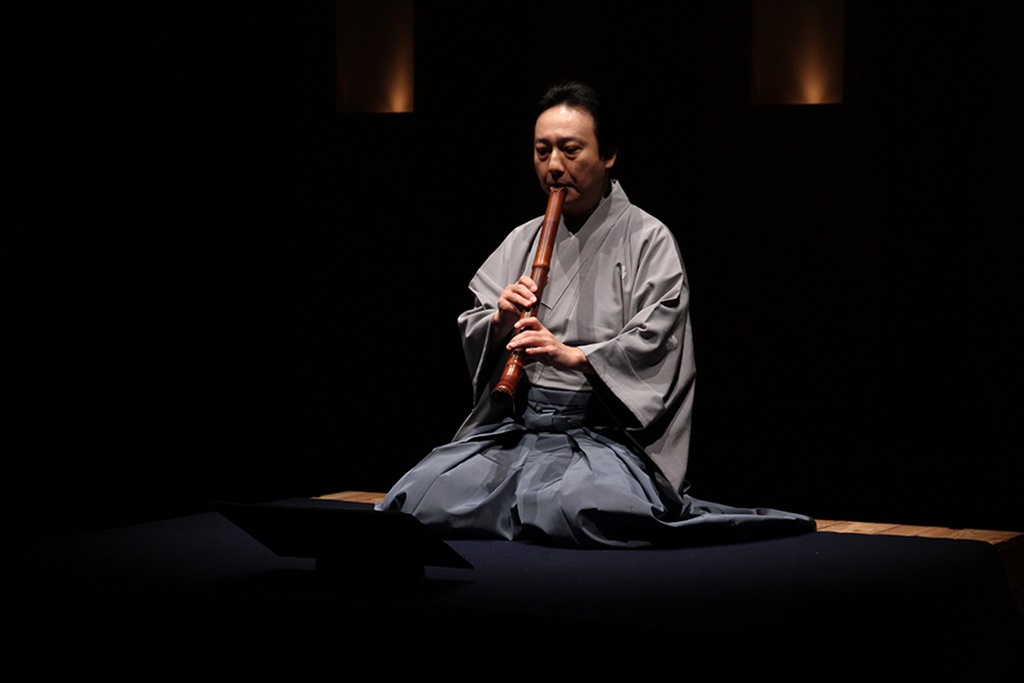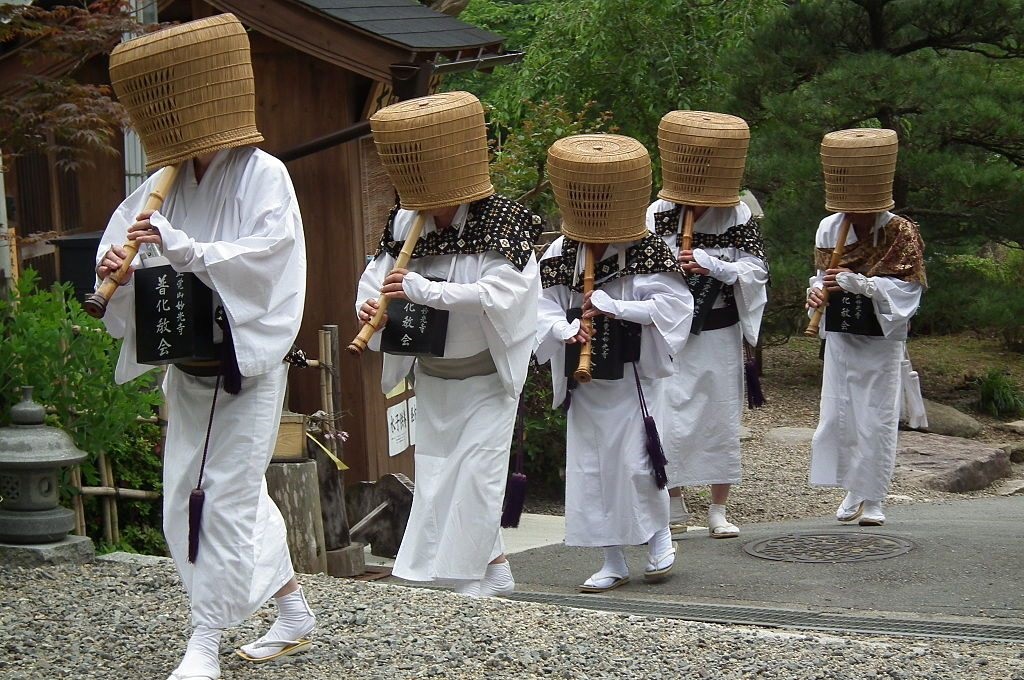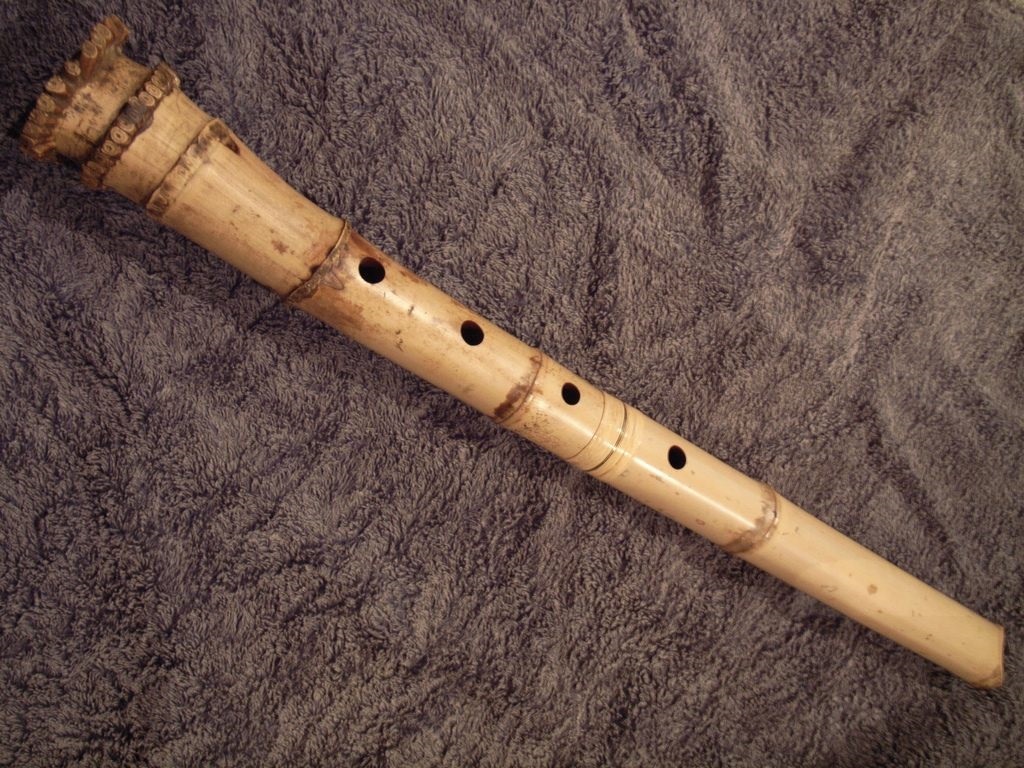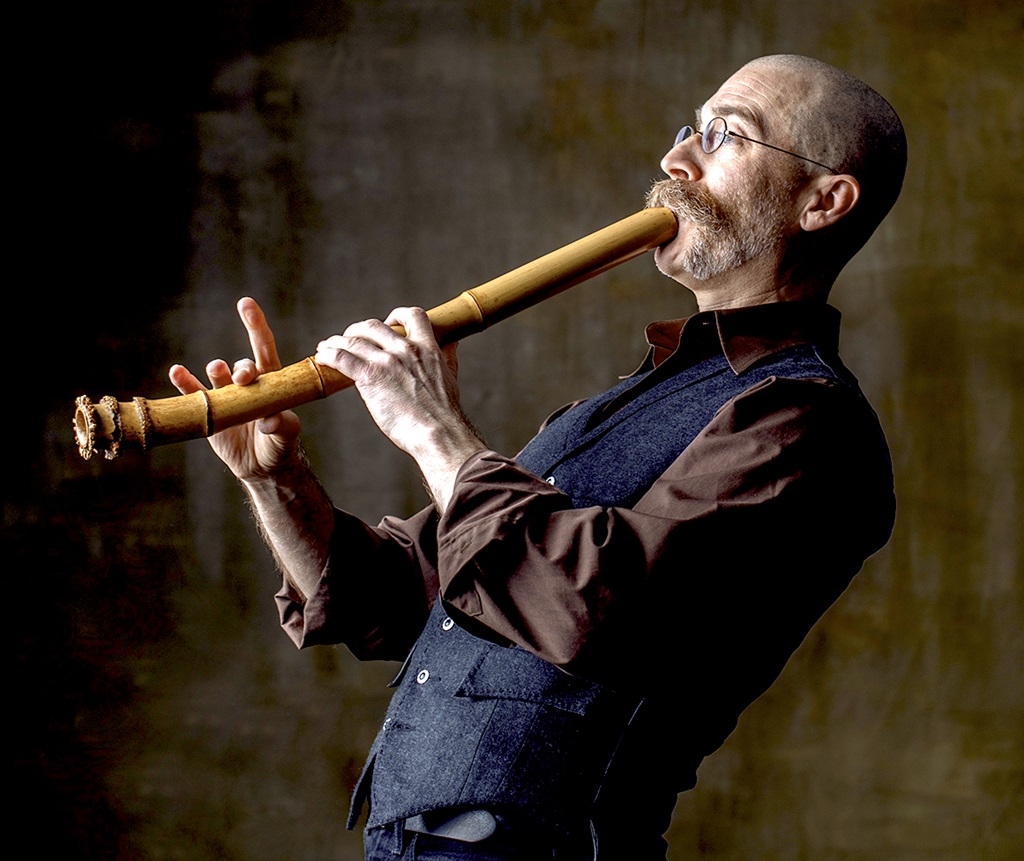
What is a Japanese Bamboo Flute Called?
The Japanese bamboo flute produces a light, airy tone that can inspire tranquility or melancholy in the listener. Its sound evokes the rustling of bamboo in the wind and carries the peaceful essence of traditional Japanese culture. While simple in construction, the bamboo flute requires great skill to play, as the musician must carefully control their breathing to produce each delicate note. Let’s explore the history, construction, and playing techniques of this classic Japanese instrument.
Table of Contents
ToggleA Bamboo Flute By Any Other Name
The Japanese bamboo flute goes by many names. Here are some of the most common:
- Shakuhachi (尺八) – This term refers to a bamboo flute approximately 1 shaku (about 1.8 feet) long. It’s the most common and generic term for the Japanese bamboo flute.
- Hotchiku (箸竹) – Meaning “bamboo flute” in Japanese. This is also a broad term that can refer to any bamboo flute from Japan.
- Fue (笛) – Literally translating to “flute” in Japanese. Again, this is a generic term that can apply to flutes of any material, not just bamboo.
- Takebue (竹笛) – Literally “bamboo flute” in Japanese. This specifies that the flute is made of bamboo.
- Uta Takebue (歌竹笛) – Meaning “singing bamboo flute.” Refers to a particular type of shakuhachi flute used to play meditative solo music.
The shakuhachi is by far the most common term used, though fue, takebue, and hotchiku may also be heard. When someone refers to the Japanese bamboo flute, they are almost always talking about the shakuhachi flute in particular.
A Flute Born of Zen

The bamboo flute has a long history in Japan, but it really came into its own during the Edo period (1603-1868). At this time, it was adopted by Zen Buddhist monks known as komuso, who used the shakuhachi for suizen (blowing meditation). They found the focused breathing required to play the flute to be the perfect mindfulness practice.
In addition to meditation, the komuso monks would also travel the countryside playing the shakuhachi flute while begging for alms. With their heads covered by woven reed baskets, they cut a striking image and spread the meditative music of the shakuhachi across Japan. Due to their mobile, mendicant lifestyle, the komuso monks helped elevate the shakuhachi from a folk instrument to an integral part of Japanese spiritual practice.
After the Meiji period (1868 onward), the komuso order declined, but the shakuhachi continued to grow in popularity. It was brought to the secular world and developed into an ensemble and solo instrument. Today it remains deeply connected to meditation and is valued for its otherworldly tone.
Crafting a Japanese Bamboo Flute
The shakuhachi flute is made from the root end of a thick bamboo stalk. Madake (真竹) is the preferred species, as it has the ideal thickness and hardness. The bamboo is cured to minimize cracking and bending, then a section is cut with the root end forming the blowing end of the flute.
The bamboo is hollowed out and a blowing edge (utaguchi) is created by shaving the end at an angle into a tapered shape. Five finger holes are made in the front and a thumb hole is made in back. Simple decorations may be etched into the bamboo surface.
The bore of the flute is carefully widened using blades or files to create the proper interior shape and wall thickness. This is critical for producing the correct notes and tone color. The end result is a simple and natural, yet surprisingly intricate woodwind instrument.
Modern flutes are often made with special machines and tools, but traditional shakuhachi are still handcrafted by master artisans using techniques passed down through generations. It takes years of training to learn how to properly shape and tune a bamboo flute by hand.
Playing Technique: Following the Breath
Playing the shakuhachi bamboo flute requires proper breath control and embouchure (mouth position) to produce a tone. The blowing edge is placed against the lower lip at an angle of around 35 to 40 degrees. The top teeth lightly rest directly on the edge to stabilize it.
Air is blown downward in a precise stream to elicit the sound. Subtle adjustments of lip pressure, blowing angle, and air speed produce different notes and timbres. Finger holes are covered to change pitches. Half-holing certain notes and meri/kari techniques (shifting pitches with the breath) give the shakuhachi its signature expressive warbling.
But even more important than the physical techniques is proper breath control. When playing the shakuhachi, the mental focus should be on Following The Breath. All tone production and pitch changes should correspond seamlessly with the breathing rhythm. Notes should begin, end, and shift on the inhales and exhales.
This is what imbues the shakuhachi with its meditative essence. The player strives to empty their mind and become a vessel for the breath. The flute’s sound rises and falls, sighs and whispers, just as the breath itself does. In this way, shakuhachi embodies the ephemeral beauty of life.
Types of Japanese Bamboo Flutes

While the shakuhachi is the most ubiquitous Japanese bamboo flute, there are a few other types worth mentioning:
Nōkan
This is a simple transverse flute used in Noh and Kabuki theater music. It has a thick, melancholic tone perfect for dramatic performances.
Ryūteki
A small transverse flute used in Japanese court music (gagaku) and folk performances. It has a high, reedy timbre.
Shinobue
A compact transverse flute used in Japanese folk music. Its bright, perky tone suits upbeat festival songs.
Hocchiku
A larger version of the shakuhachi, ranging from 1.8 to 3.6 feet long. Its deep, echoing tones made it a favorite of Buddhist monks.
While the shakuhachi remains the most famous, all these flutes contribute to Japan’s diverse bamboo flute traditions and repertoire.
Bamboo Flute Music
The shakuhachi and other Japanese bamboo flutes have a large repertoire of traditional music:
- Honkyoku – Zen Buddhist solo pieces played by komuso monks during meditation. They emphasize tranquility and breath control.
- Sankyoku – Ensemble music blending shakuhachi, koto (zither), and shamisen (lute) as meditative chamber music.
- Fuke Shakuhachi Honkyoku – The zenith of shakuhachi solo repertoire from the peak of the Fuke komuso period. Meant to evoke enlightenment.
- Kotodama – Short pieces said to represent the spiritual essence of words through music. They are imbued with Japanese aesthetics.
- Shin-honkyoku – Modern concert solo pieces evolved from the traditional honkyoku. They take advantage of the flute’s sound.
- Min’yo – Japanese folk songs. The shakuhachi often plays pastoral melodies evoking rural life.
- Gagaku – Classical imperial court music that uses wind instruments like the ryūteki flute.
Today, the shakuhachi also plays plenty of contemporary, international genres – from jazz to classical to pop. Flexible and soulful, its bamboo voice sings in many styles.
Release the Breath, Make the Music

The Japanese bamboo flute carries a meditative spirit inhaled from the komuso monks who brought it enlightenment. Yet it soars just as well on folksy or contemporary currents of air. Its tones ring with the natural essence of its bamboo origins, but reach beyond to touch the sublime. By sharing their breath, musicians give it voice, and it rewards them with a reflection of inner stillness or joy. For this simple flute offers meaningful lessons on how to live with graceful impermanence in a fleeting world.
Conclusion
The Japanese bamboo flute has a long, rich history intertwined with Zen Buddhism and meditation. Though simple in construction, it requires great skill and breath control to play properly. When played mindfully, it produces an ethereal, soulful tone. The shakuhachi remains the most prominent type of Japanese bamboo flute, though many other varieties exist as well. Its meditative music provides tranquil beauty and reflects Japanese aesthetic values. For those seeking a direct path to mindfulness through music, the Japanese bamboo flute offers a pure yet versatile bamboo voice.
Frequently Asked Questions
What are the different names for the Japanese bamboo flute?
The most common names are shakuhachi, hotchiku, fue, takebue, and uta takebue. Shakuhachi is the most widely used term.
How is a Japanese bamboo flute made?
It is made from a bamboo root, cured and hollowed out. The blowing edge is tapered and holes are cut to make notes. The bore is shaped to tune the flute.
Why did Buddhist monks play the shakuhachi flute?
Zen Buddhist monks (komuso) played shakuhachi for meditation. Its breath control and focused tone aligned with zazen meditation practices.
How do you play the Japanese bamboo flute?
You blow down across the blowing edge at an angle, focusing on matching breath and music. Fingers cover holes to change pitches. Subtle embouchure changes also affect tone.
What styles of music use the Japanese bamboo flute?
Many styles, including honkyoku meditation music, folk min’yo songs, classical gagaku, contemporary jazz and pop, and more. Its sound is very versatile.





